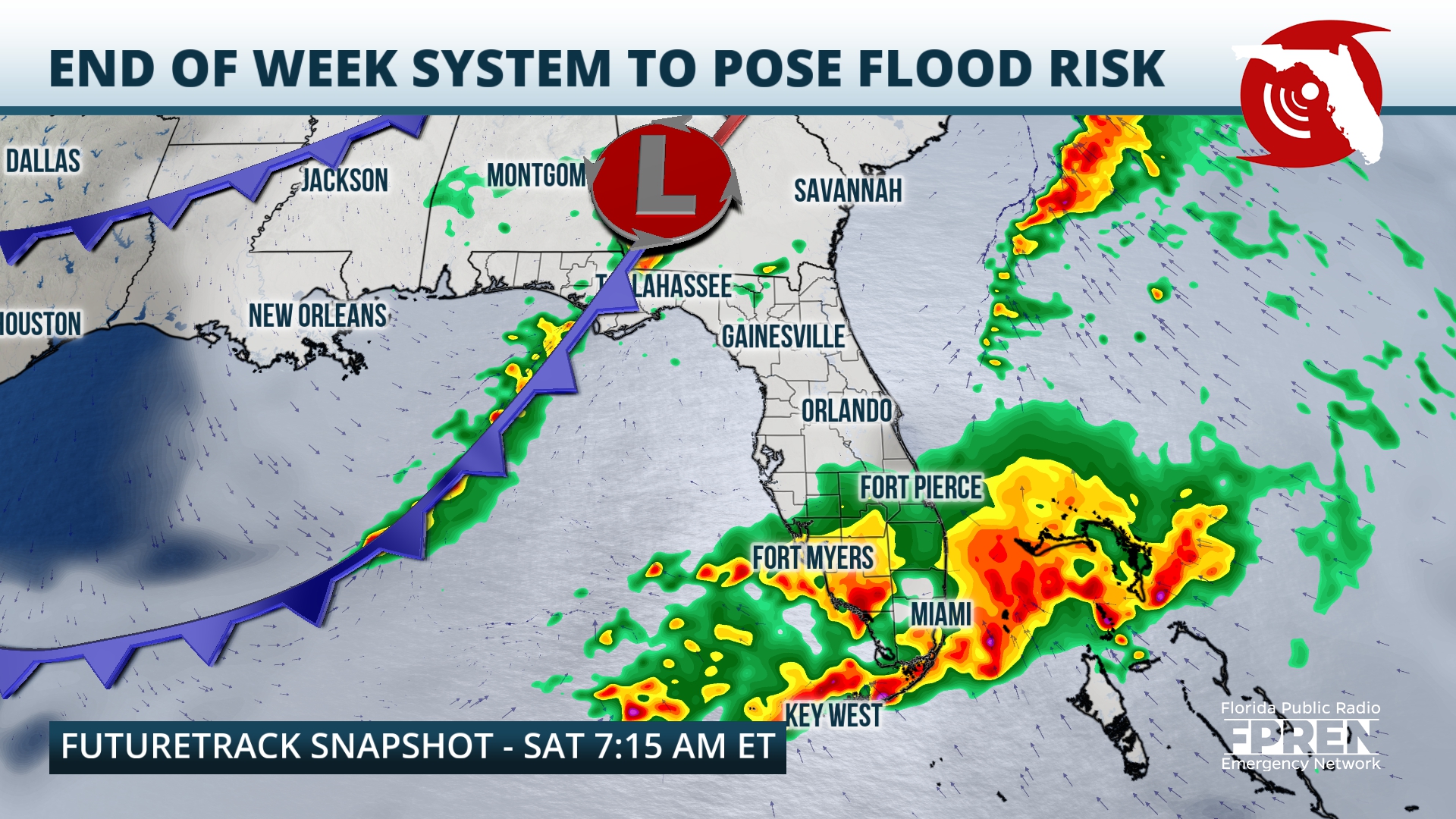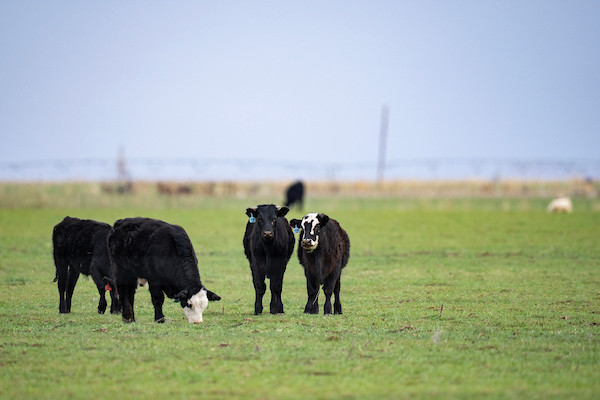Conservation Assessment of Endemic Flora in South Sinai and Alignment with Sustainable Development Goals
Executive Summary
This report details the findings of a comprehensive field survey and modeling study on four target plant species within the St. Catherine Protected Area (SCPA): Primula boveana, Rosa arabica, Micromeria serbaliana, and Silene oreosinaica. The research provides critical data on their geographic distribution, population status, habitat ecology, and threats. These findings directly inform conservation strategies and align with key United Nations Sustainable Development Goals (SDGs), particularly SDG 15 (Life on Land), SDG 13 (Climate Action), and SDG 6 (Clean Water and Sanitation). The study highlights an expansion in the known range for all species and results in the reclassification of Rosa arabica from Critically Endangered to Endangered, demonstrating the positive impact of monitoring and rehabilitation efforts.
Advancing SDG 15 (Life on Land): Biodiversity Assessment and Habitat Monitoring
This research directly contributes to SDG 15, which aims to protect, restore, and promote the sustainable use of terrestrial ecosystems and halt biodiversity loss. The study’s focus on threatened endemic species is a core component of Target 15.5 (protect threatened species and prevent their extinction).
Geographic Range and Population Status
Field surveys documented all target species between 800–2400 m above sea level. The discovery of new sites, supplemented by rehabilitation efforts from 2021, has led to a significant expansion of the known geographic range for these species.
- Extent of Occurrence (EOO) Expansion:
- Primula boveana: Increased from 18.6 km² to 72.8 km²
- Rosa arabica: Increased from 47 km² to 102 km²
- Micromeria serbaliana: Increased from 68 km² to 88 km²
- Silene oreosinaica: Increased from 53 km² to 61 km²
- Area of Occupancy (AOO) Expansion:
- Primula boveana: Increased from 24 km² to 36 km²
- Rosa arabica: Increased from 36 km² to 52 km²
- Micromeria serbaliana: Increased from 44 km² to 48 km²
- Silene oreosinaica: Increased from 12 km² to 16 km²
- Population Estimates and Structure:
- Populations are small, discontinuous, and scattered in rocky micro-habitats.
- Estimated population sizes are: P. boveana (~170), R. arabica (~125), M. serbaliana (~270), and S. oreosinaica (~130).
- Populations are severely fragmented by mountain barriers, resulting in distinct sub-populations that exhibit fluctuations and instability.
Habitat, Ecology, and Threats
Understanding the ecological requirements and threats is fundamental to achieving Target 15.1 (conserve and restore terrestrial ecosystems). All species are located within the mountainous ecosystems of the SCPA, classified by IUCN as rocky, mountainous, and desert regions.
Microhabitat Preferences:
- Primula boveana: Over 84% confined to cliffs, particularly those nourished by melted snow and near permanent water sources.
- Rosa arabica: Primarily found in gorges (53%) and wadis (35%).
- Micromeria serbaliana: Over 45% located on slopes.
- Silene oreosinaica: Over 75% situated on cliffs.
Identified Threats:
Despite protection, these species face significant threats that undermine biodiversity goals.
- Natural Threats: Long-term drought, scarce rainfall, habitat fragmentation, and flash floods (causing up to 15% loss from uprooting). The presence of deceased and desiccated specimens was linked to insufficient water.
- Anthropogenic Threats:
- Rosa arabica is threatened by overgrazing, harvesting for traditional medicine, and use as firewood. Over 25% of mature plant biomass is estimated to be harvested by humans.
- M. serbaliana and S. oreosinaica are severely impacted by overgrazing, which removes reproductive structures and prevents seed dispersal.
Extinction Risk and Conservation Status
The assessment directly informs the IUCN Red List, a key tool for tracking progress on SDG 15.5. The expanded EOO for Rosa arabica to 102 km² justified its reclassification from Critically Endangered (CR) to Endangered (EN). However, P. boveana, M. serbaliana, and S. oreosinaica remain classified as Critically Endangered (CR) due to their highly restricted ranges, fragmented populations, and continued decline in habitat quality.
Addressing SDG 13 (Climate Action): Modeling Future Habitat Viability
This report contributes to SDG 13 by assessing the impacts of climate change on biodiversity and strengthening resilience through predictive modeling (Target 13.1). The Species Distribution Model (SDM) provides a crucial tool for climate adaptation planning.
Model Performance and Key Environmental Drivers
The MaxEnt model demonstrated high predictive accuracy (AUC > 0.95, TSS > 0.85) for identifying suitable habitats. Key environmental factors influencing species distribution were identified:
- P. boveana: Annual precipitation (47.9%), mean temperature of the wettest quarter (30%), and elevation (8.3%).
- R. arabica: Precipitation of the coldest quarter (86%), water content (6.6%), and mean diurnal range (4.6%).
- M. serbaliana: Mean temperature of the wettest quarter (55.3%) and annual precipitation (26.6%).
- S. oreosinaica: Precipitation of the wettest month (55.3%) and mean temperature of the wettest quarter (31.3%).
Potential Habitat Suitability Changes under Future Climate Scenarios
The model projected changes in suitable habitats for the 2050s and 2070s under SSP1 2.6 and SSP5 8.5 scenarios, providing an early warning system for conservation managers.
- Habitat Stability and Shift:
- P. boveana: Projected to lose 7-32% of its currently suitable area but also gain new areas at higher elevations.
- R. arabica: Shows high stability, retaining over 96% of its suitable habitat in most scenarios.
- M. serbaliana & S. oreosinaica: Face significant future changes, with projections indicating habitat shrinkage by 2070, with losses up to 24% and 41%, respectively.
- Adaptive Management Implications:
- Lost habitats are projected to be in peripheral, fragmented regions.
- Gained habitats are consistently projected for higher elevations in mountainous areas like Catherine, Ramghan, and Sabbah.
- This data allows for proactive conservation planning, focusing on protecting future climate refugia and facilitating species migration to newly suitable zones.
Informing SDG 6 (Clean Water and Sanitation) and SDG 11 (Sustainable Communities)
The study provides insights relevant to the broader environmental context of the SDGs.
Link to SDG 6 (Clean Water and Sanitation)
The survival of Primula boveana is intrinsically linked to water availability from melted snow and permanent water sources, making it an indicator species for the health of mountain water ecosystems (Target 6.6). The primary threat of drought underscores the vulnerability of this arid region’s water resources and the ecosystems that depend on them.
Link to SDG 11 (Sustainable Cities and Communities)
By providing scientific data to support the management of the St. Catherine Protected Area, this research contributes to Target 11.4 (protect the world’s cultural and natural heritage). The sustainable management of the SCPA, informed by such studies, ensures the protection of its unique biodiversity from anthropogenic pressures like unsustainable harvesting and overgrazing, safeguarding this natural heritage for future generations.
1. Which SDGs are addressed or connected to the issues highlighted in the article?
Explanation:
The article’s focus on the conservation of threatened plant species, their habitats in a mountainous protected area, and the impacts of climate change and human activities directly connects to several Sustainable Development Goals. The core themes are biodiversity, ecosystem health, and climate resilience.
- SDG 15: Life on Land – This is the most prominent SDG, as the entire article is dedicated to protecting, restoring, and promoting the sustainable use of a terrestrial ecosystem (the mountainous region of South Sinai). It deals with halting biodiversity loss by studying and conserving threatened plant species.
- SDG 13: Climate Action – The article strongly links the survival of the target species to climatic factors. It identifies drought as a major threat and uses climate change models (SSP1 2.6 and SSP5 8.5) to project future habitat suitability, directly addressing the need to take action to combat climate change and its impacts.
- SDG 6: Clean Water and Sanitation – The article highlights the critical role of water availability for the survival of the species. It mentions that species are found in “water-rich cliffs,” are “nourished by melted snow,” and that “insufficient water” leads to desiccation. This connects to the goal of protecting water-related ecosystems.
2. What specific targets under those SDGs can be identified based on the article’s content?
Explanation:
The detailed research and findings presented in the article align with several specific targets under the identified SDGs. The study’s actions and observations can be mapped directly to the objectives outlined in these targets.
SDG 15: Life on Land
- Target 15.1: By 2020, ensure the conservation, restoration and sustainable use of terrestrial and inland freshwater ecosystems and their services, in particular forests, wetlands, mountains and drylands, in line with obligations under international agreements.
- The study is conducted within the St. Catherine Protected Area (SCPA), a mountainous and arid (dryland) ecosystem. It mentions “rehabilitated sites” for Primula boveana and Rosa arabica, indicating active restoration efforts.
- Target 15.4: By 2030, ensure the conservation of mountain ecosystems, including their biodiversity, in order to enhance their capacity to provide benefits that are essential for sustainable development.
- The research focuses exclusively on a mountain ecosystem (SCPA) and its unique biodiversity (the four endemic plant species), assessing their status to inform conservation management.
- Target 15.5: Take urgent and significant action to reduce the degradation of natural habitats, halt the loss of biodiversity and, by 2020, protect and prevent the extinction of threatened species.
- The article directly addresses this by assessing the extinction risk of four threatened species, three of which are classified as Critically Endangered (CR). It documents threats like habitat fragmentation, overgrazing, and harvesting, and notes the improvement of one species’ status from CR to Endangered (EN), demonstrating actions to prevent extinction.
SDG 13: Climate Action
- Target 13.1: Strengthen resilience and adaptive capacity to climate-related hazards and natural disasters in all countries.
- The study identifies climate-related hazards such as “long-term drought,” “irregular and scarce rainfall patterns,” and “flash floods” as primary threats. The Species Distribution Models (SDMs) that project future habitat changes are tools to understand and plan for building resilience in conservation.
- Target 13.2: Integrate climate change measures into national policies, strategies and planning.
- The use of future climate scenarios (2050s and 2070s) to predict habitat loss and gain is a direct example of integrating climate change considerations into conservation planning for the protected area.
SDG 6: Clean Water and Sanitation
- Target 6.6: By 2020, protect and restore water-related ecosystems, including mountains, forests, wetlands, rivers, aquifers and lakes.
- The article emphasizes the species’ dependence on specific water-related microhabitats within the mountain ecosystem, such as areas “nourished by melted snow,” “moist soil surrounding wells,” and “year-round permanent water sources.” The observation of “deceased and desiccated specimens… due to insufficient water” highlights the need to protect these vital water sources.
3. Are there any indicators mentioned or implied in the article that can be used to measure progress towards the identified targets?
Explanation:
The article is rich with quantitative and qualitative data that serve as direct or indirect indicators for measuring progress towards the identified SDG targets. These metrics provide a clear picture of the state of the ecosystem and the species within it.
- For Target 15.5 (Protect threatened species):
- Indicator 15.5.1 (Red List Index): The article explicitly uses the IUCN Red List to assess the conservation status of the species. It reports that Primula boveana, Micromeria serbaliana, and Silene oreosinaica are “Critically Endangered (CR),” while Rosa arabica has been downlisted from CR to “Endangered (EN).” This directly measures changes in extinction risk.
- For Targets 15.1 and 15.4 (Conserve terrestrial and mountain ecosystems):
- Geographic Distribution Data: The article provides precise measurements for the Extent of Occurrence (EOO) and Area of Occupancy (AOO) for each species, showing changes over time. For example, the EOO for Primula boveana increased from 18.6 km² to 72.8 km², and its AOO increased from 24 km² to 36 km². This data measures the effectiveness of conservation and rehabilitation efforts.
- Population Size and Fluctuation: The article gives estimated population sizes (e.g., “approximately 170 for P. boveana“) and tracks population trends, noting they “experience fluctuations and instability.” This serves as an indicator of species viability.
- Habitat Degradation Metrics: The article quantifies threats, such as “an observed 15% loss due to uprooting” from flash floods and “over 25% of the biomass of mature plants is harvested and utilized by humans.” These are direct indicators of habitat degradation.
- For Targets 13.1 and 13.2 (Climate resilience and planning):
- Projected Habitat Change: The study provides quantitative projections of habitat change under different climate scenarios. For instance, for P. boveana, it projects a loss of “7.74 km²” and a gain of “7.3 km²” under the 2050 – SSP1 2.6 scenario. This data is a key indicator for assessing future climate risks and planning adaptation strategies.
- Identification of Climate-Dependent Species: The statement that “*Primula boveana*… serve as indicators for assessing climate change, as its presence is associated with water availability” establishes a bio-indicator for monitoring climate impacts.
- For Target 6.6 (Protect water-related ecosystems):
- Species Health as a Proxy for Water Availability: The report of a “significant number of deceased and desiccated specimens… likely due to insufficient water” serves as a direct, albeit qualitative, indicator of the health and water status of the supporting ecosystem.
4. Table of SDGs, Targets, and Indicators
| SDGs | Targets | Indicators Identified in the Article |
|---|---|---|
| SDG 15: Life on Land |
15.1: Conserve and restore terrestrial and freshwater ecosystems.
15.4: Ensure conservation of mountain ecosystems. 15.5: Protect threatened species and halt biodiversity loss. |
|
| SDG 13: Climate Action |
13.1: Strengthen resilience to climate-related hazards.
13.2: Integrate climate change measures into planning. |
|
| SDG 6: Clean Water and Sanitation | 6.6: Protect and restore water-related ecosystems. |
|
Source: bmcecolevol.biomedcentral.com







